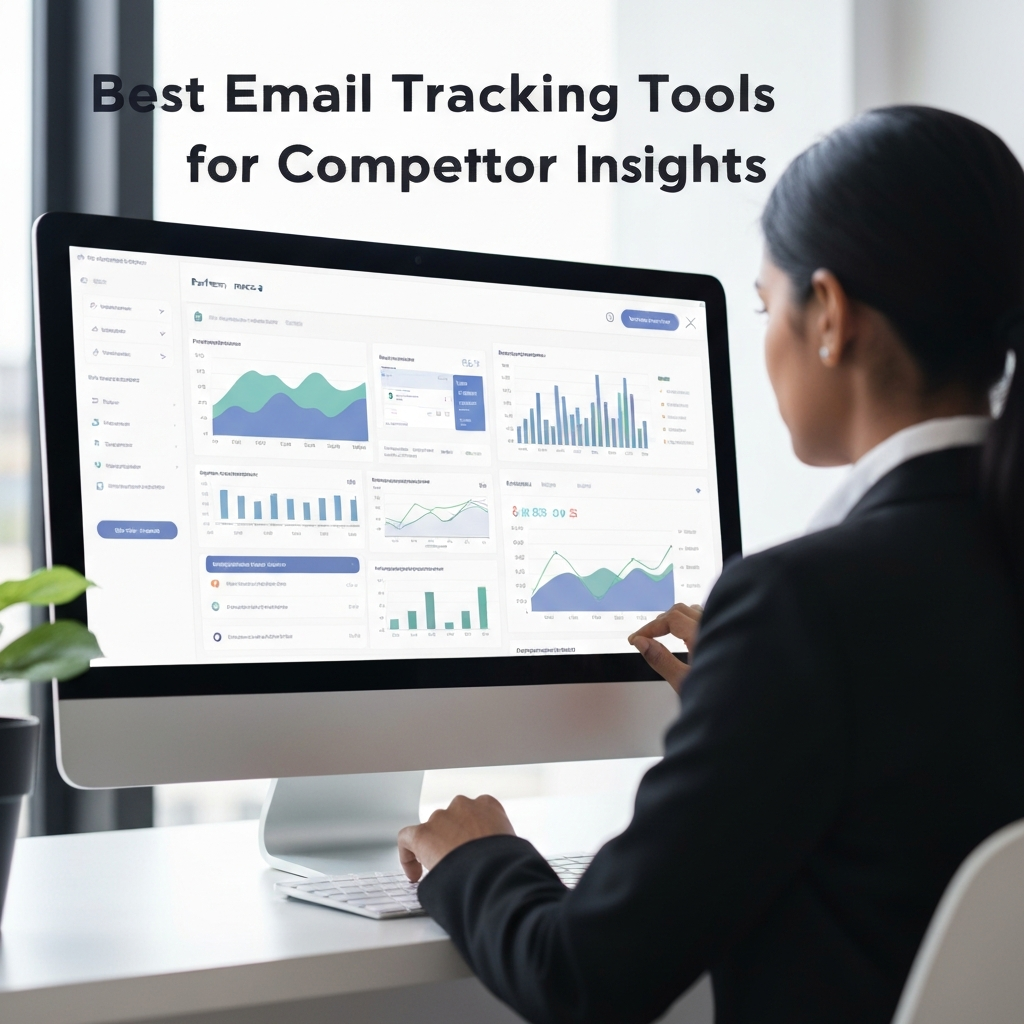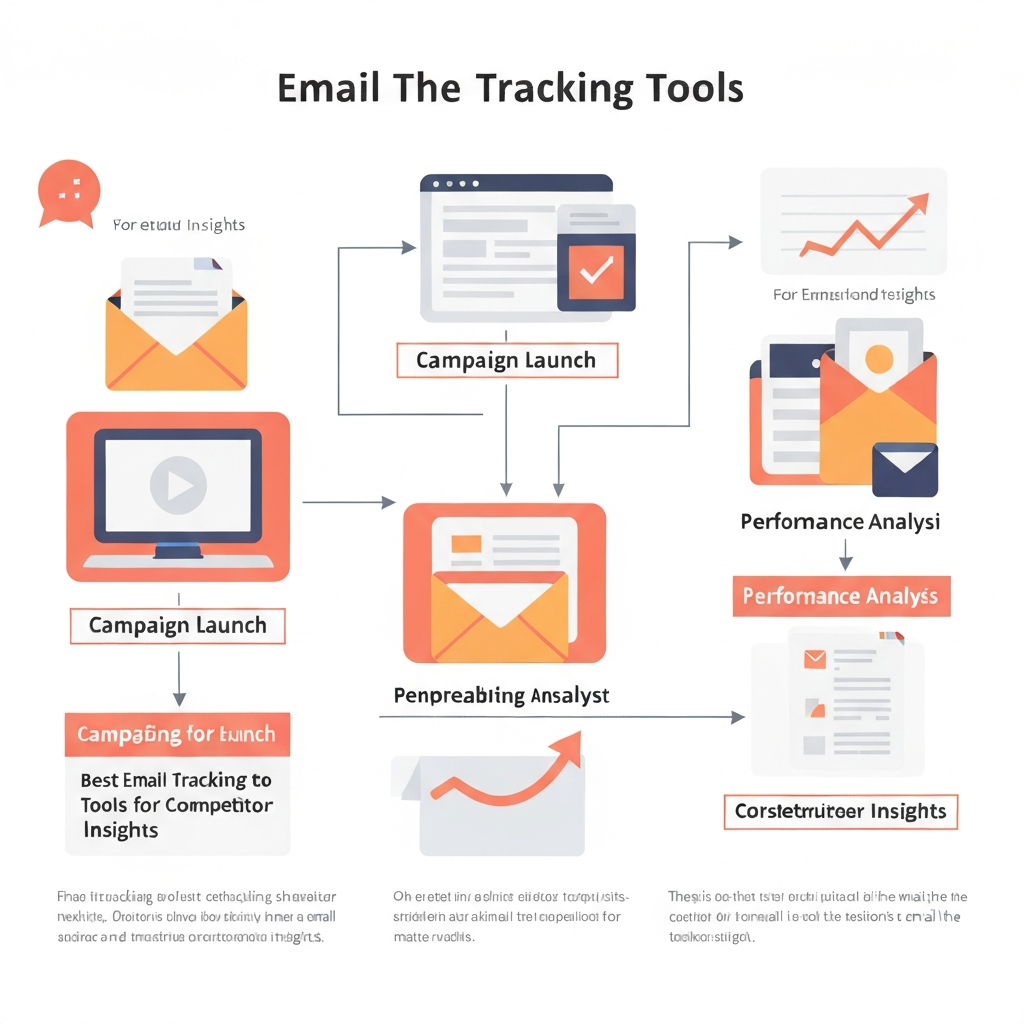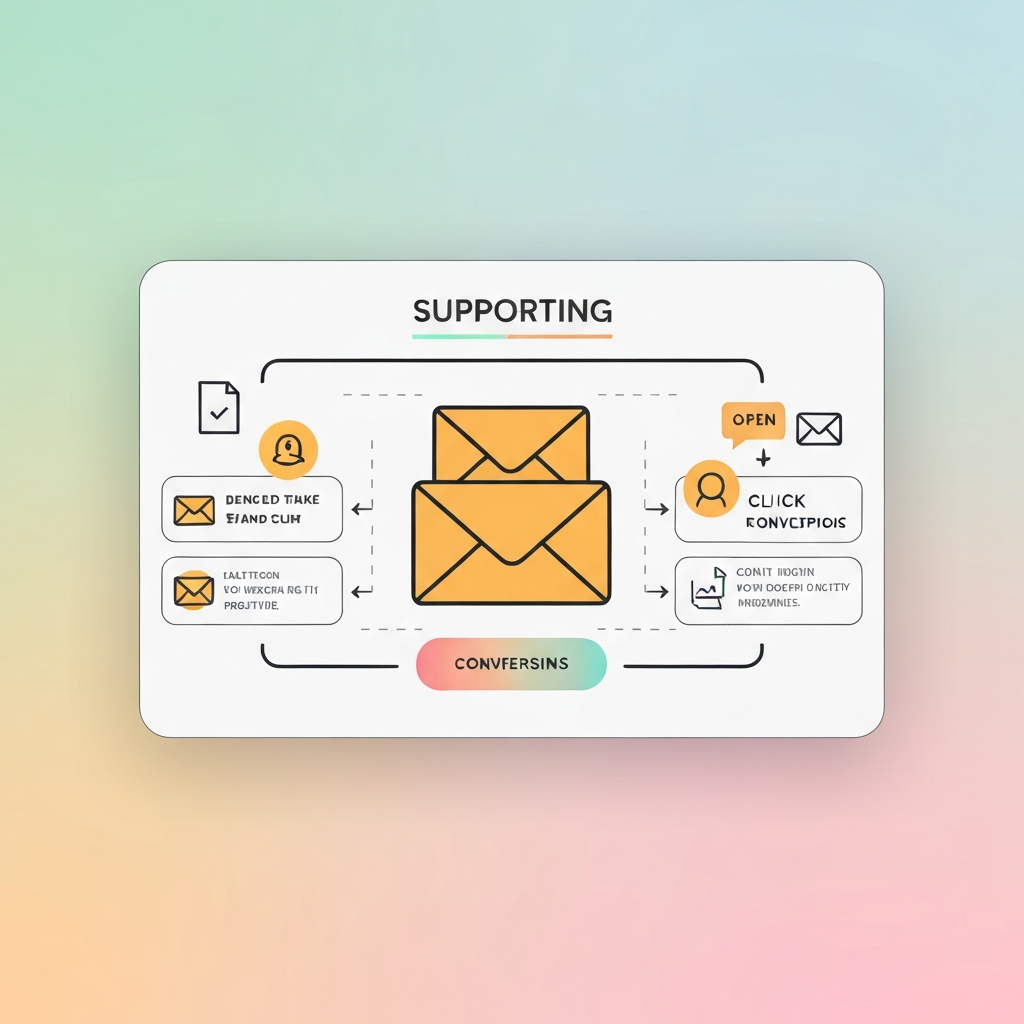Best Email Tracking Tools for Competitor Insights
In today's fiercely competitive business landscape, staying ahead isn't just about having a great product or service; it's about understanding the strategies your rivals are employing. For many businesses, email remains a primary channel for communication, marketing, and sales. But how do you know what your competitors are saying to your shared audience? How effective are their campaigns? This is where the power of email tracking tools designed for competitor intelligence comes into play. By leveraging these sophisticated tools, you can gain invaluable insights into competitor strategies, refine your own outreach, and ultimately secure a significant competitive edge.
Understanding Key Email Tracking Metrics (Opens, Clicks, Downloads)
Before diving into competitor analysis, it's essential to grasp the fundamental metrics that email tracking tools provide. These aren't just abstract numbers; they are indicators of audience engagement and the effectiveness of communication strategies. When applied to competitor analysis, they offer a tangible look into what's working (or not working) for them.
Email Open Rates
The most basic, yet crucial, metric is the email open tracking. This tells you whether a recipient has opened your email. For competitor analysis, this metric is a strong indicator of:
- Subject Line Effectiveness: Consistently high open rates on competitor emails suggest their subject lines are compelling enough to capture attention in a crowded inbox.
- Brand Recognition and Interest: A high open rate can also signify strong brand awareness or a highly engaged subscriber list that anticipates their communications.
- Deliverability: If a competitor's emails consistently land in the inbox and get opened, it can offer clues about their sender reputation and email list health.
While an open doesn't guarantee engagement, it's the critical first step. If a competitor's emails aren't being opened, their subsequent messaging efforts are likely to fail.
Click-Through Rates (CTR)
Once an email is opened, the next step is encouraging a recipient to take action, typically by clicking a link. Email link tracking is vital here. CTR measures the percentage of recipients who clicked on one or more links within an email. For competitor insights, a high CTR suggests:
- Compelling Content: The body of the email, the offers presented, or the calls-to-action (CTAs) are resonating with the audience.
- Relevant Offers: Competitors might be promoting products, services, or content that their audience finds highly valuable.
- Effective CTAs: The wording and placement of their calls-to-action are clear and persuasive.
Analyzing which links within a competitor's email receive the most clicks can reveal their current priorities, popular products, or key content pieces.
Download Tracking
For businesses that share resources like whitepapers, case studies, templates, or product catalogs via email, download tracking is another significant metric. If an email tracking tool can identify when a competitor's email attachment has been downloaded, it provides insight into:
- Audience Interest in Specific Resources: What kind of in-depth content is their audience seeking?
- Lead Magnet Effectiveness: Are their downloadable assets valuable enough to warrant a click and download?
- Content Strategy Focus: It highlights specific areas or topics where the competitor is investing heavily in content creation.
These metrics, when viewed collectively, paint a picture of a competitor's email communication strategy and its perceived success.
How Email Tracking Data Informs Competitor Analysis
The real magic happens when you move beyond simply observing metrics and start using them to understand your competitors' strategies. Competitor email monitoring transforms raw data into actionable intelligence that can shape your own sales and marketing efforts.
Decoding Subject Lines and Preheaders
By observing which of a competitor's subject lines consistently yield high open rates, you can identify patterns in their messaging. Are they using curiosity, urgency, personalization, or benefit-driven language? Similarly, the preheader text (the snippet visible after the subject line) plays a critical role. If a competitor's emails have high opens but low clicks, their subject line might be effective, but the preview text or the initial impression isn't compelling enough to drive further action.
Analyzing Content and Offers
Email link tracking is invaluable for understanding what a competitor is promoting. By seeing which links get clicked, you can infer:
- Product/Service Focus: Are they pushing a new product launch, a seasonal sale, or a particular service tier?
- Content Pillars: What kind of blog posts, guides, or webinars are they directing traffic to?
- Promotional Strategies: What types of discounts, bundles, or limited-time offers are they presenting?
This allows you to see if you're missing opportunities in your own promotions or if your messaging aligns with what the market is responding to.
Understanding Frequency and Timing
How often do your competitors email their list? What days and times do they typically send their communications? Tools like SendView and data from sources like Attest can reveal these patterns. Understanding competitor sending schedules can help you:
- Avoid Inbox Congestion: You might choose to send your emails on different days or at different times to avoid competing directly for inbox real estate with a major rival.
- Identify Market Gaps: If a competitor only emails once a month, there might be an opportunity for you to engage more frequently.
- Benchmark Performance: Observing their send frequency can help you set realistic goals for your own email cadence.
Gauging Audience Engagement and Sentiment
While direct sentiment analysis of competitor emails is complex, inferring it from engagement metrics is possible. If a competitor sends a series of emails about a new feature and the CTRs are low, it might indicate a lack of interest or a poorly communicated value proposition. Conversely, if their emails about a particular industry trend consistently get high opens and clicks, it suggests their audience is highly engaged with that topic. This insight informs your own content strategy and helps you understand what truly matters to your shared customer base. These insights are critical for improving your overall marketing email performance.
Top Features to Look For in Email Tracking Tools
When selecting an email tracking tool for competitor insights, look beyond basic open and click tracking. The most effective tools offer a comprehensive suite of features:
- Competitor Email Capture: The ability to automatically capture, store, and organize emails sent by specific competitors is foundational. This ensures you have a historical record to analyze.
- Real-time Alerts: Get notified immediately when a competitor sends a new campaign, launches a promotion, or makes a significant change in their messaging. This allows for timely analysis and response.
- Sender Analysis: Some advanced tools can help identify who within the competitor's organization is sending emails (e.g., marketing team, sales team, specific individuals), offering clues about their internal structure and focus.
- Content and Creative Analysis: Tools that allow you to view the actual HTML and rendered versions of competitor emails, along with their subject lines and creatives, are invaluable for understanding their visual and textual approach.
- Send Time and Frequency Analysis: As mentioned, understanding the cadence and timing of competitor emails is crucial. Tools that provide detailed analytics on this front are highly beneficial.
- Link Tracking and Destination Analysis: Beyond just counting clicks, knowing *which* links are clicked and where they lead (landing pages, product pages, specific articles) offers deep insights into their funnel and content strategy.
- Relevance Filtering: With so many brands competing for attention, the ability to filter out irrelevant emails and focus only on those pertinent to your business or industry is a must. This is a key feature highlighted by sources like Sproutsocial.
- Benchmarking and Performance Reports: The tool should provide clear, digestible reports that allow you to compare your own performance against competitor benchmarks and track trends over time. Data from eDS emphasizes the need for benchmarking against others.
- Integration Capabilities: For seamless workflow, consider tools that integrate with your existing CRM, marketing automation platforms, or analytics dashboards.
For businesses on a tighter budget, manual tracking can offer some insights, as noted by Panoramata, but it's significantly more time-consuming and less comprehensive than dedicated tools.
Leveraging Email Tracking for Sales Outreach and Strategy
For sales teams, understanding competitor email activity can directly influence their outreach strategies and close more deals. By employing sales email analytics derived from competitor monitoring, sales professionals can:
Gain Prospect Context
If you know a prospect is actively engaging with a competitor's email campaigns (e.g., clicking on specific product links), you can tailor your own outreach. You might address the competitor's offering directly, highlight your unique advantages, or offer a more compelling alternative. This level of informed outreach is far more effective than generic sales pitches.
Identify Competitor Weaknesses
Observe competitor emails that have low open or click-through rates. This could indicate:
- Ineffective subject lines.
- Irrelevant offers.
- Poorly written copy.
- A lack of perceived value.
These weaknesses present opportunities for your sales team to position your product or service as the superior solution.
Detect Competitor Promotions and Urgency
Early detection of competitor discounts, flash sales, or limited-time offers allows your sales team to proactively counter them. They can reach out to prospects who might be considering the competitor's offer with a better deal, a stronger value proposition, or a more immediate solution.
Refine Your Sales Email Cadence
By observing competitor follow-up times and frequencies, sales teams can adjust their own approach. If a competitor is very aggressive with follow-ups, you might opt for a more spaced-out, value-driven approach. If they are too passive, you might seize the opportunity to be more persistent and informative.
Understand Competitor Messaging Nuances
Analyze the language, tone, and specific benefits highlighted in competitor sales emails. This helps your team understand what resonates with your shared target audience and allows you to craft more persuasive and targeted messaging. Improving email engagement metrics for your own sales emails starts with understanding what works in the market.
Ultimately, using competitor email tracking for sales means moving from a reactive to a proactive stance, armed with insights that allow for more intelligent and effective customer engagement.
Using Email Tracking for Smarter Marketing Campaigns
Marketing departments can derive immense value from competitor email tracking, using the insights to optimize their own campaigns for better reach and impact. This goes beyond simple observation; it's about strategic adaptation to improve marketing email performance.
Benchmarking Your Performance
Compare your own email open rates, CTRs, and conversion rates against those of your competitors. This provides a realistic benchmark for your efforts. Are you underperforming, or are you leading the pack? This data helps set achievable goals and identify areas for improvement.
Optimizing Subject Lines and Content
As discussed, observing competitor subject lines that consistently perform well can inspire new approaches for your own campaigns. Similarly, analyzing which links in their emails get the most clicks can guide your content creation. If they're seeing high engagement with case studies, perhaps you should prioritize creating and promoting more case studies.
Identifying Market Trends and Gaps
What topics are your competitors focusing on? What problems are they trying to solve for their audience? By tracking their campaigns, you can identify emerging market trends or uncover underserved needs. If competitors are all emailing about a new technology, it might be time for you to address it. If no one is talking about a particular pain point, you might have an opportunity to be the first.
Refining Your Value Proposition
Examine the core messages and benefits competitors highlight in their emails. This helps you understand how they position themselves and what aspects of their offering they emphasize. This can lead to refining your own unique selling proposition (USP) to better differentiate yourself and resonate more strongly with your target audience.
Improving Email Engagement Metrics
By understanding what drives clicks and opens for your competitors, you can implement similar successful strategies. This includes A/B testing different subject lines inspired by competitor successes, optimizing your CTAs, and ensuring your email content directly addresses audience interests. This data-driven approach is key to boosting email engagement metrics.
In essence, competitor email tracking allows marketers to learn from the successes and failures of others, reducing guesswork and leading to more effective, data-backed campaigns.
Choosing the Right Email Tracking Tool for Your Business
With a plethora of options available, selecting the right email tracking tool requires careful consideration of your business needs, budget, and team structure. Here are key factors to weigh:
Define Your Goals
What do you primarily want to achieve? Are you focused on sales intelligence, marketing campaign benchmarking, or a holistic view of the competitive landscape? Your primary objective will guide the features you prioritize.
Budget Considerations
Email tracking tools range from free or freemium models to premium enterprise solutions. While manual tracking is free, it's time-consuming and limited. Dedicated tools offer more depth. Consider the ROI: how much can improved insights and strategies save or earn your business?
Feature Set vs. Complexity
Some tools offer an overwhelming array of features, which can be counterproductive if your team isn't trained to use them. Look for a balance between robust functionality and ease of use. Features like automated reporting and intuitive dashboards are crucial for busy professionals. For those looking to maximize efficiency and gain deeper insights, exploring AI-powered solutions is key. Tools like an ai executive assistant can help streamline your workflow, automate repetitive tasks, and even provide predictive analytics for your own email campaigns, freeing you up to focus on strategic analysis of competitor data.
Integration with Existing Tools
Ensure the tool can integrate seamlessly with your CRM (like Salesforce, HubSpot), marketing automation platforms, or other analytics software. This prevents data silos and enables a more unified view of your customer and competitive landscape.
Scalability
Choose a tool that can grow with your business. If you anticipate expanding your team or increasing the number of competitors you monitor, ensure the platform can accommodate these changes.
Support and Training
Good customer support and accessible training resources can make a significant difference in how quickly and effectively your team adopts and utilizes the tool.
For entrepreneurs and small businesses, tools that offer core features like competitor email capture and basic analytics might suffice. Larger organizations may require more advanced features like detailed segmentation analysis, AI-driven insights, and extensive integration options. Platforms like SendView specifically cater to marketers looking for deep competitor email monitoring.
The Future of Email Tracking: AI and Advanced Analytics
The evolution of email tracking tools is intrinsically linked to advancements in artificial intelligence (AI) and data analytics. The future promises even more sophisticated capabilities that will push the boundaries of competitor intelligence.
AI-Powered Pattern Recognition
AI algorithms can analyze vast amounts of data to identify subtle patterns in competitor email strategies that human analysts might miss. This includes predicting campaign success, identifying emerging content themes, and understanding shifts in audience sentiment based on engagement patterns. This is where AI email tools truly shine.
Natural Language Processing (NLP)
NLP allows tools to understand the context, sentiment, and key themes within competitor email copy and subject lines. This moves beyond simple keyword tracking to a deeper comprehension of their messaging strategy, tone, and overall narrative.
Predictive Analytics
Instead of just reporting what happened, future tools will increasingly focus on predicting what *will* happen. AI can forecast competitor campaign performance, anticipate their next strategic moves, and even suggest optimal times and content for your own campaigns based on these predictions.
Automated Insights and Recommendations
AI can automate the process of generating actionable insights and recommendations. Instead of sifting through raw data, users will receive straightforward suggestions on how to counter competitor strategies, capitalize on market gaps, or optimize their own email engagement metrics.
Enhanced Personalization at Scale
By understanding competitor personalization tactics and their effectiveness, AI can help businesses implement more sophisticated personalization strategies for their own communications, ensuring messages are highly relevant to individual recipients.
The integration of AI will transform email tracking from a monitoring function into a predictive and prescriptive intelligence engine, fundamentally changing how businesses approach competitive analysis and email strategy. This shift underscores the importance of looking for tools that are embracing these advanced capabilities, potentially including sophisticated ai executive assistant solutions that can help manage and interpret this growing stream of data.
Conclusion
In the digital arena, knowledge is power, and understanding your competitors' email strategies is a significant advantage. Email tracking tools are no longer a niche luxury but a strategic necessity for businesses aiming to thrive. By meticulously tracking opens, clicks, and other key metrics, and by employing advanced features like competitor email monitoring and AI-driven analytics, you can gain profound insights into what resonates with your shared audience, identify market gaps, and refine your own sales and marketing efforts.
Whether you're a seasoned marketer looking to boost marketing email performance, a sales professional aiming to sharpen your outreach with precise sales email analytics, or an entrepreneur seeking to navigate a competitive landscape, the right email tracking solution can be transformative. Don't let your competitors dictate the conversation. Start leveraging the power of competitor intelligence today and secure your place at the forefront of your industry.
```


